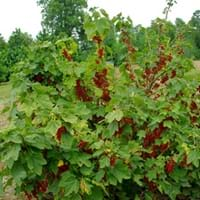Life Span
Perennial
Perennial
Origin
Europe, Central Asia, Western Asia
Asia, Europe, North America
Types
Rovada, ‘Red Lake’ AGM, Junifer
Black Ash, Blue Ash, California Ash, Carolina Ash, European Ash
Number of Varieties
Not Available
Habitat
Broad-Leaved Forests, shores, Stream side
Forest edges, Hillside, Woods
USDA Hardiness Zone
3-8
3-9
Sunset Zone
Not Available
9, 12, 13, 14, 15, 16, 17, 18, 19, 20, 21, 22, 23, 24
Habit
Upright/Erect
Oval or Rounded
Flower Color Modifier
Bicolor
Not Available
Fruit Color
White, Red, Pink, Ivory
Not Available
Leaf Color in Spring
Green
Dark Green
Leaf Color in Summer
Green
Dark Green
Leaf Color in Fall
Yellow, Green
Dark Green
Leaf Color in Winter
Light Green
Dark Green
Leaf Shape
Maple shaped
Oblovate
Plant Season
Summer
All year
Sunlight
Full Sun, Partial Sun, Partial shade
Full Sun, Part sun
Type of Soil
Loam
Loamy, Sandy
The pH of Soil
Acidic, Neutral
Acidic
Soil Drainage
Well drained
Well drained
Bloom Time
Early Spring, Spring
Late Spring, Spring
Tolerances
Drought
Drought, Pollution, Soil Compaction
Where to Plant?
Container, Ground, Pot
Ground
How to Plant?
Divison, Seedlings
Grafting, Seedlings, Stem Planting, Transplanting
Plant Maintenance
Medium
Medium
Watering Requirements
occasional watering once established, Requires watering in the growing season
Does not require lot of watering, Medium, Prefer drip-irrigation instead of Over-head watering
In Summer
Lots of watering
Lots of watering
In Spring
Moderate
Moderate
In Winter
Average Water
Average Water
Soil pH
Acidic, Neutral
Acidic
Soil Type
Loam
Loamy, Sandy
Soil Drainage Capacity
Well drained
Well drained
Sun Exposure
Full Sun, Partial Sun, Partial shade
Full Sun, Part sun
Pruning
Prune every year, Prune to half of its height, Prune to stimulate growth
Prune in winter, Prune prior to new growth
Fertilizers
Citrus, Fertilize every year
All-Purpose Liquid Fertilizer
Pests and Diseases
Aphids, Birds, Borers, Red blotch
Bark splits, Crown gall, Epicormic Sprouting, Woodpecker feeding
Plant Tolerance
Drought
Drought
Flower Petal Number
Single
Single
Foliage Texture
Medium
Medium
Foliage Sheen
Not Available
Glossy
Allergy
Asthma
Not Available
Aesthetic Uses
Showy Purposes
Not Used For Aesthetic Purpose
Beauty Benefits
Not Available
Not Available
Environmental Uses
Not Available
Air purification
Medicinal Uses
Iron, Phosphorus, Vitamin B, Vitamin C
Fever, Liver problems
Part of Plant Used
Fruits, Whole plant
Leaves, Stem
Other Uses
Culinary use, Used As Food, Used as Ornamental plant
Used as Ornamental plant
Used As Indoor Plant
Yes
No
Used As Outdoor Plant
Yes
Yes
Garden Design
Edible, Fruit / Fruit Tree, Hedges, Mixed Border
Shady Tree, Showy Tree
Botanical Name
RIBES rubrum
Fraxinus
Common Name
Red Currant
Ash Tree
In Hindi
Red Currant
राख पेड़
In German
Rote Johannisbeere
Esche
In French
Groseille
Frêne
In Spanish
Grosella
Fresno
In Greek
Κόκκινη σταφίδα
δέντρο Ash
In Portuguese
Groselha
Freixo
In Polish
Porzeczkowy
Jesion
In Latin
red RIBES
Fraxinum
Phylum
Magnoliophyta
Anthophyta
Class
Magnoliopsida
Magnoliopsida
Family
Grossulariaceae
Oleaceae
Clade
Angiosperms, Core eudicots, Eudicots
Angiosperms, Asterids, Eudicots
Tribe
Not Available
Oleeae
Subfamily
Not Available
Not Available
Number of Species
Not Available
Season and Care of Red Currant and Ash Tree
Season and care of Red Currant and Ash Tree is important to know. While considering everything about Red Currant and Ash Tree Care, growing season is an essential factor. Red Currant season is Summer and Ash Tree season is Summer. The type of soil for Red Currant is Loam and for Ash Tree is Loamy, Sandy while the PH of soil for Red Currant is Acidic, Neutral and for Ash Tree is Acidic.
Red Currant and Ash Tree Physical Information
Red Currant and Ash Tree physical information is very important for comparison. Red Currant height is 120.00 cm and width 120.00 cm whereas Ash Tree height is 75.00 cm and width 45.00 cm. The color specification of Red Currant and Ash Tree are as follows:
Red Currant flower color: Green
Red Currant leaf color: Green
Ash Tree flower color: White
- Ash Tree leaf color: Dark Green
Care of Red Currant and Ash Tree
Care of Red Currant and Ash Tree include pruning, fertilizers, watering etc. Red Currant pruning is done Prune every year, Prune to half of its height and Prune to stimulate growth and Ash Tree pruning is done Prune in winter and Prune prior to new growth. In summer Red Currant needs Lots of watering and in winter, it needs Average Water. Whereas, in summer Ash Tree needs Lots of watering and in winter, it needs Average Water.





